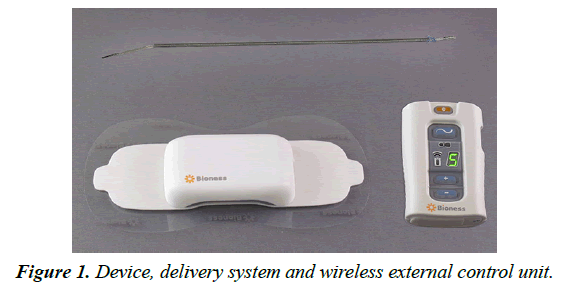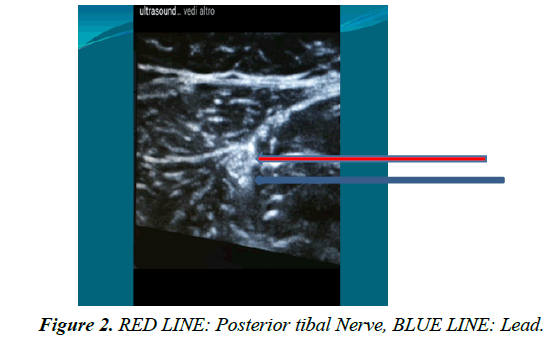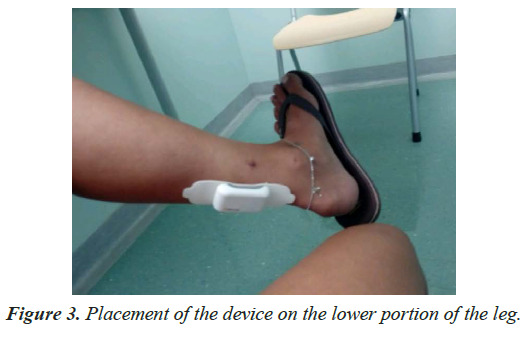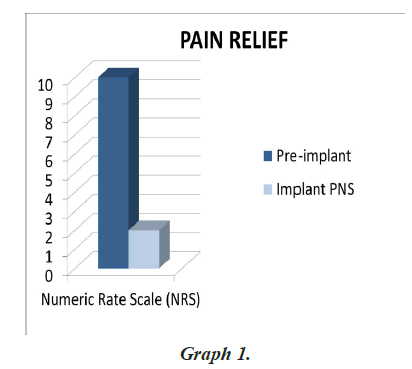Image Article - Journal of Pain Management and Therapy (2018) Volume 2, Issue 2
Tibial nerve stimulation for chronic pelvic pain. Is this non-invasive technique the right way?
Massimiliano Raggi*Pain Therapy Center, Rovereto, Italy
- *Corresponding Author:
- Massimiliano Raggi
Pain Therapy Center, Roverto, Italy
Tel: +390461904172-848806806
E-mail: massimilianoraggi@libero.it
Percutaneous Tibial Nerve Simulation was evaluated in one young patient suffering with chronic pelvic pain.
For the percutaneous technique, the device is inserted using a designated delivery system (Figure 1) and is positioned under ultrasound guidance (Figure 2) [1].
The device is wirelessly powered by an external control unit that controls all the electro-stimulation parameters and is worn by the patient in the lower third region of the leg (Figure 3) [2].
Effects were recorded by Visual Analogic Scale (VAS), for pain diary, the Health-related quality of life questionnaire and drug therapies at baseline and after 12 weeks of treatment.
Results
• VAS 10>2
• (HRQL) health-related quality of life low >high
• Drug therapies <50% (Graph 1).
References
- Peter KM, Carrico DJ, MacDiarmid SA, et al. Sustained therapies effects of percutaneus tibial nerve stimulation: 24- month results of the STEP study. Neurourol Urodyn. 2013; 32(1):24-9.
- Deer T, Pope J, Benyamin R, et al. Prospective, multicenter, randomized, double-blinded, partial crossover study to assess the safety and efficacy of a novel neuromodulation system in the treatment of patients with chronic pelvic pain of peripheral nerve origin. Neuromodulation 2016; 19(1):91-100.



